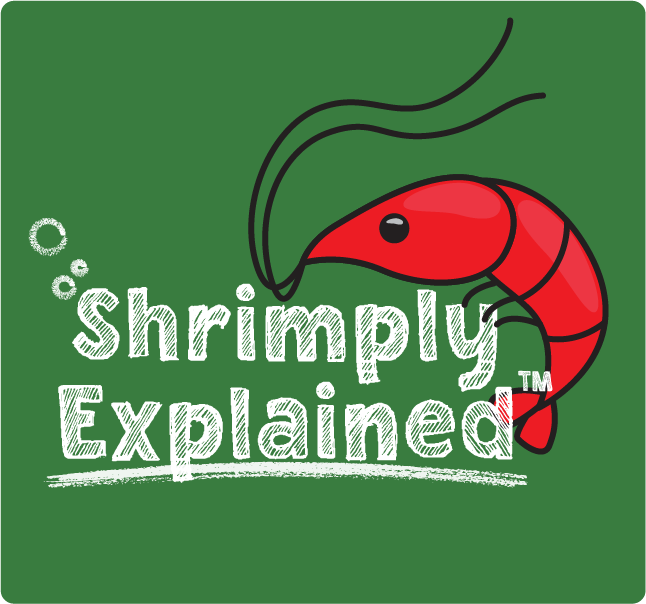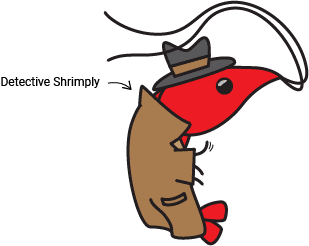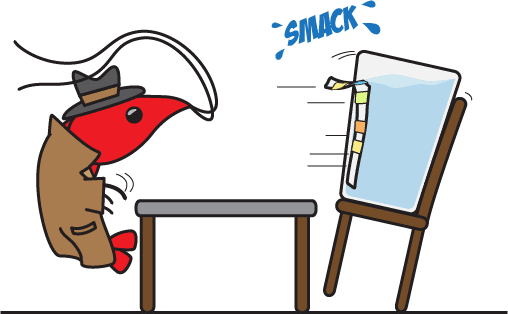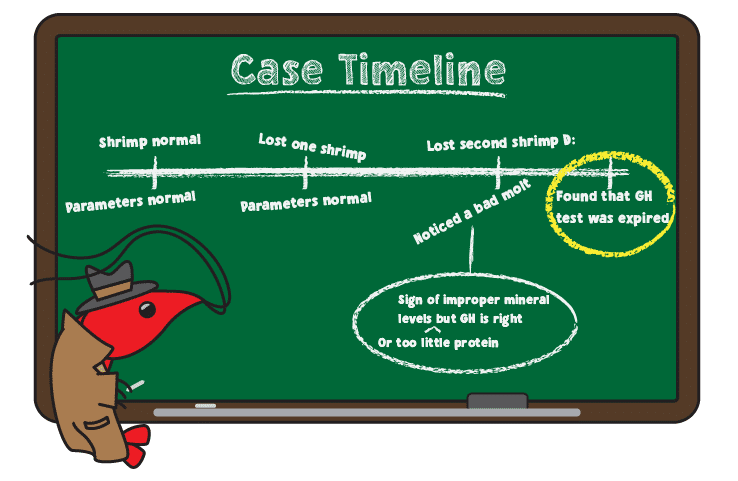

The question "Why are my shrimp dying?" is something we wish no one needed to ask but, unfortunately, death is a part of nature.
If you recently experienced a shrimp dying, then we are extremely sorry. Hopefully, it happened due to old age but, all too often, it may be from preventable issues like too-fast acclimation, pH swings, tank cycle crashes, molting problems, etc. Regardless, it always hurts, no matter how many you have.
Knowing what to do when your shrimp dies is not always clear but following the procedures laid out in this guide helps determine why your shrimp are dying. It also protects your other shrimp from the same fate. While we cannot possibly cover every cause that brought your shrimp to the afterlife, this article explains the information that must be collected to accurately determine why your shrimp are dying. It also provides a couple of shrimp keeping groups that may help you if you are having trouble figuring it out.
FYI - Most of the article is written from the perspective of Detective Shrimply investigating a case, in the hopes of lightening up this depressing topic.

WE-OOO WE-OOO WE-OOO
*Squealing car tires*
*Door slamming*
*Footsteps approaching*
“Officer, what happened here?”
“Thank goodness you’re here Detective Shrimply! There’s a body we need you to take a look at.”
“Lead the way. Oh, and good job getting a perimeter set up. Let’s get some pictures and see what we can find.”
Whenever you see a dead shrimp, immediately set up a perimeter to isolate it from the others. That means getting it out of the tank and into a separate container filled with water. There are a few reasons for this:
Once you have the scene under control and have your initial observations, then add notes to the case file. After that, it is time to talk to some witnesses.
“So… Mrs. pH, is it?”
“Y-Yes… Yes sir.”
“Where were you at the time of death?”
“I was just, uh, on the corner of Street 7.2, s-sir, at my job.”
“Hmmm, were you now?”
Mumbling
“That-That’s correct.”
“Then why does our witness Ms. Test Strip testify seeing you at Street 8.2?!”
*Throws test strip at witness*

The second step is to explore the scene and question any witnesses that may have information regarding why your shrimp died. That starts with your water parameters and the test kits themselves. All the following parameters should be questioned:
Be sure to record these in the case file.
If you don’t have test kits for all these parameters, then we highly recommend getting some because it’s very difficult to diagnose the cause of shrimp death otherwise.
Now, it’s time to do some background checks on the witnesses to confirm they’re not covering anything up. Can you trust what Ms. Test Strip told you? What about the others?
To perform a background check, always look at the expiration dates on your testing equipment and find testimonials of witness credibility (product reviews) online. Some kits, especially test strips, are notoriously unreliable.
If any of your reliable witnesses see something out of the ordinary, then it may be easy to identify the culprit. Obviously, ammonia or nitrite levels above 0 and nitrates above 40 (or even 20) are a problem; pH shouldn’t have changed too much since your last test; GH should be above 4 and KH above 0 (in most cases).
It is also important to consider if the death could have been natural. While it is difficult to tell the exact age of any shrimp, a larger adult that you know was in the tank for a year or more could have simply died of old age. If parameters are fine and only one shrimp died, then that may be the most likely cause.
If you doubt a natural death and don’t have any suspicious witnesses, then it is time to reconstruct the events leading up to the death.
Sit down, pull out a strip of moss to chew on, and do some thinking – Specifically about any recent events at the crime scene (the tank).

Often, recent changes to the tank can cause disturbances. Obvious cases are when a new shrimp gets added and a fungal infection suddenly breaks out. Others are less obvious, like feeding non-organic spinach that happens to release harmful pesticides in the tank (We’ve seen a few cases of that, so always get organic, pesticide-free veggies for them). Even if there is nothing new that occurred, adding any recent maintenance, food, etc., to the case report is always a good idea. More information makes it easier for other shrimp keepers to figure out why your shrimp are dying, if you decide to reach out to a person or group online.
With any luck, there should be something that stands out as a potential cause of death. Some of the most common causes include the following:
This is by no means an exhaustive list but it may lead you on the right track. If you still can’t figure out what the probable cause is, even with some Google searching, then it may be time to bring in online help. The cumulative shrimp keeping knowledge in groups like the r/ShrimpTank subreddit and the Shrimp Keeper Facebook page can be extremely helpful.
If you do decide to post online about why your shrimp are dying, then please include the full case report, including the type of shrimp, how long the tank has been established, any changes/observations, and all parameters. Don’t just say the parameters are fine because a lot of people get incorrect parameter information online. Also, not including your parameters is dangerous because someone may incorrectly diagnose your problem, potentially leading to the death of even more shrimp if you follow their advice.
Lastly, as with any place on the internet, you may get bad advice. Always do your own research to confirm the information you receive from anyone online, even from Shrimply Explained. It is never good to put complete trust in any single source of information.
Again, if you recently experienced the death of a shrimp, then we are very sorry for your loss. Whenever this happens, always do a thorough investigation by following these steps:
Hopefully, this post helps you thoroughly investigate shrimp deaths and protect the rest of your colony.
If you have any questions, feedback, etc., then please reach out! There are always improvements that can be made to our content so we really appreciate anything you have to say. In addition, we love talking with members of the community and enhancing our shrimp knowledge together.
Thank you for reading. We wish you the best on your shrimp keeping adventure.
Pssst... Want to learn everything you need to know to have happy and healthy freshwater shrimp? We've got you covered with clear, concise, and fun information in every lesson of The Shrimp School!
You know it's true because we have a badge.
Other Shrimp Content
We have a lot of content coming soon. Feel free to follow us on social media and subscribe to our newsletter for updates and useful shrimp care tips!